- Established 1982 -HOME: www.hiltonpond.org
THIS WEEK at HILTON POND Subscribe for free to our award-winning nature newsletter (Back to Preceding Week; on to Next Week) |
PASSIONFLOWER, 3,000 CARDINALS, By simplest definition, a vine is a plant that requires support and cannot extend upright without eventually falling over on itself. Vines can be fully herbaceous like Trumpet Honeysuckle, or they may be woody or semi-woody like Muscadine grapes. Vines such as Yellow Jessamine are rather sinuous, inching upward by twining through the branches of trees; others cling to tree bark via special "holdfasts"--e.g., Trumpet Creeper and Poison Ivy--while some produce corkscrew-like tendrils that twist around twigs as the vine grows. Our focus this week is one of the latter--a rather delicate native vine called Yellow Passionflower.
All text, maps, charts & photos © Hilton Pond Center Many folks are familiar with the large, spidery Purple Passionflower, Passiflora incarnata (above), also known as "Maypops" for a springtime fruit that pops if you stomp it. This rambling native vine--which grows prostate in sunny places such as roadsides and unmowed pastures--sometimes produces tendrils that allow it to grow on fences and low shrubs. Its intricate purple flower is quite large (up to 6" in diameter) and produces that greenish-yellow fruit about the size and shape of a chicken egg.
All text, maps, charts & photos © Hilton Pond Center Yellow Passionflower, P. lutea (above), is less showy and far smaller than it purple-colored congener, with a blossom less than an inch in diameter. We think this vine should be called "Little White Passionflower" because the flowers we've seen at Hilton Pond Center have barely any yellow in them. Or maybe it should be "White Liverleaf" for its distinctive three-lobed foliage. (Alas, the name "Liverleaf" is already applied to various equally lobed species of Hepatica.)
All text, maps, charts & photos © Hilton Pond Center The Center's population of Yellow Passionflower has been expanding in recent years along edges of small meadows and trails. (The species is native to the central and eastern U.S. from Texas to Pennsylvania and south to Florida.) In fact, one of our most extensive local stands is on a semi-sunny path where we deploy a mist net to capture birds for banding. There we noticed passionflower growth in late spring when three-lobed leaves appeared and the plants began climbing saplings and shrubs that line the net lane. The non-intrusive vine's vertical progress was possible because of those tiny twisted tendrils (see above) that embraced and held tightly to stems and leaf petioles of stouter plants. Most interesting was one Yellow Passionflower vine supported by a Muscadine vine that was using a little Red Mulberry tree for support.
All text, maps, charts & photos © Hilton Pond Center Passionflower blossoms are breathtakingly complex, with five wide white sepals surrounding a maze of thin cylindrical white petals. At the center is a crown-like structure that gives rise to five pollen-bearing stamens topped by three sticky upward-pointing pistillate lobes that bend downward after they receive pollen, as above. These intricate flowers are visited by the Passionflower Bee, Anthemurgus passiflorae--a tiny, quarter-inch-long black "mining bee" (Andrenidae) for which Yellow Passionflower is the only source of pollen the bee stores in ground nests for its larvae. Oddly, this enigmatic insect doesn't seem to do any reciprocal pollination, leaving that task to larger creatures. (While we were making close-up photos, we saw an unidentified paper wasp briefly visit a passionflower.)
All text, maps, charts & photos © Hilton Pond Center If a Yellow Passionflower does get pollinated, the blossom wilts and the ovary begins to swell into a green egg-shaped fruit a little less than a half-inch long. It ripens to blue-black (above) and is eaten by birds and small mammals that undoubtedly help disperse it across the Hilton Pond property. The plant's leaves are seldom deer-browsed, which is good because Yellow Passionflower is an important host plant for butterfly caterpillars such as Gulf Fritillary, Variegated Fritillary, and Zebra Heliconia, (all members of the butterfly family Nymphalidae). And although we've never observed it, we've heard Ruby-throated Hummingbirds will take nectar from Yellow Passionflower--just in case you're looking for a reason to grow it on a trellis in your backyard wildflower habitat. All text, maps, charts & photos © Hilton Pond Center
All text, maps, charts & photos © Hilton Pond Center The 2020 calendar year has been a big one for round numbers at Hilton Pond Center. On 2 April a male Eastern Towhee became our 70,000th bird banded locally since 1982, and in June we got our 11,000th House Finch. This year we also banded and released the Center's 700th Mourning Dove, 500th Brown-headed Cowbird, 500th American Redstart, 300th Eastern Phoebe, and 100th Red-bellied Woodpecker. Then, on 26 July, Northern Cardinals (NOCA) joined the Center's "Round Number Club" with the species' 3,000th banding in 39 years! (NOCA are our sixth most commonly banded species.) This particular cardinal (see photo above) was a recent fledgling, as indicated--among other characteristics--by a small crest and by mandibles that were still partly brown rather than completely orange. Notice also the "loose" structure of feathers in the cheek and crown. We determined this NOCA was a male based on a small patch of red behind the eye and a black spot at the base of his bill that eventually will become a mask. Red plumage was also beginning to appear elsewhere on his body--much more than would be seen in a young female cardinal. With plenty of fledgling Northern Cardinals crossing the Center's banding table this year, it looks like the species is doing pretty well 'round these parts. All text, maps, charts & photos © Hilton Pond Center
All text, maps, charts & photos © Hilton Pond Center Late on the afternoon of 31 July we saw a largish bird fly into one of the mist nets we use in our banding research at Hilton Pond Center. It started squawking almost immediately, so we made a beeline out the door of the old farmhouse to extricate the bird as quickly as possible. That's our new capture in the photo above. Some folks might have difficulty identifying the bird's species from its mug shot, or even knowing what family it might represent. So here's a hint: Look closely at the tongue--not exactly a characteristic you use very often in the field. Then note the bill is long and straight and stout, and that there is a hint of red on the bird's nape. Add to that some black and white barring you can just see on the bird's back, and that's all you need to get the bird into the right family. Black and white and red; heavy, straight bill; barbed tongue. Aha! Woodpecker! Now you're thinking, this bird's head doesn't look like any woodpecker with which you're familiar, but that's because it is a young bird--a recent fledgling that doesn't yet have "adult" plumage. Should you see this bird at the feeder it would appear to have a more or less brownish head, which in the Carolina Piedmont would lead you to two woodpecker species: Either the Red-headed or the Red-bellied. We could say in 39 years at the Center we've only banded ONE Red-headed Woodpecker (an adult last year) and that would give away the I.D., but instead we'll point out the bird in question actually has an unstreaked throat and a grayish cheek, making it a Red-bellied Woodpecker (RBWO). By comparison, the entire head of a young Red-headed Woodpecker is darker brown and heavily streaked.
All text, maps, charts & photos © Hilton Pond Center If this Red-bellied Woodpecker is female, as she matures she will develop red only on the back of the head (above); in males (below right), the red continues over the crown and onto the forehead. Our fledgling RBWO caught that day was, we believe, the only offspring produced this year by its resident parents, which fed it sunflower seeds post-fledging. The youngster was also of interest because it was the 100th Red-bellied Woodpecker banded at Hilton Pond Center since 1982, and we do like those round numbers! We look forward to watching the bird mature this fall so we can learn whether it's male or female. All text, maps, charts & photos © Hilton Pond Center
All text, maps, charts & photos © Hilton Pond Center On 29 July we had one of those typical late afternoon pop-up thunderstorms at Hilton Pond Center, complete with 1.12" of torrential rain in 60 minutes--plus some gusty winds ahead of the downpour. Although rain was welcome wind was not, for yet another big tree came down with a bang. This time it was twin trunks of a tall Red Maple, Acer rubrum, struck by lightning several years ago; it appears fungi and termites got into the base and allowed the gust to snap them off at ground level. This latest treefall, you'll remember, follows on the heels of an Easter Monday storm that toppled a giant 100-year-old Southern Red Oak, Quercus falcata, at the Center; another windstorm a month or so later put a mature Black Walnut, Juglans nigra, on the roof of our old farmhouse. Those two events significantly changed surrounding microhabitat and wiped out net lanes, also tearing up several mist nets used to capture birds for banding. And wouldn't you know it, this latest felling of the Red Maple had exactly the same impact: Another net lane altered and a mist net destroyed beneath trunk and branches. As shown in our photo above, the impact bent the net pole in the foreground as the falling maple pulled the furled net to the ground. A delicate net couldn't survive such rough treatment; its trammel strings are snapped and the mesh is torn, making it unusable. Folks are talking about 2020 being a strange year. If we judge solely on multiple storms and repeated mist net damage at Hilton Pond Center, we'd be inclined to agree. At $150 per net and pole set, the loss of seven nets so far this year has created disruption and a major, unprecedented expense for our 39-year bird banding program. Please help if you can via links just below. All text, maps, charts & photos © Hilton Pond Center Image post-processing via DeNoise AI, Sharpen AI, and other Topaz Lab tools
Checks also can be sent to Hilton Pond Center at: All contributions are tax-deductible on your Don't forget to scroll down for Nature Notes & Photos, |
|---|
|
"This Week at Hilton Pond" is written and photographed by Dr. Bill Hilton Jr., executive director of Hilton Pond Center for Piedmont Natural History
|
|
|
Please refer "This Week at Hilton Pond" to others by clicking on this button: |
|

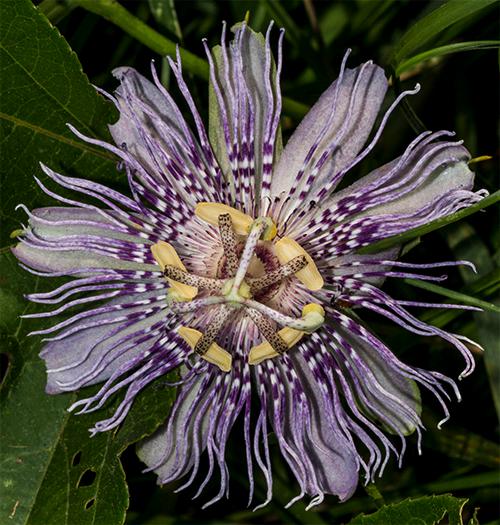
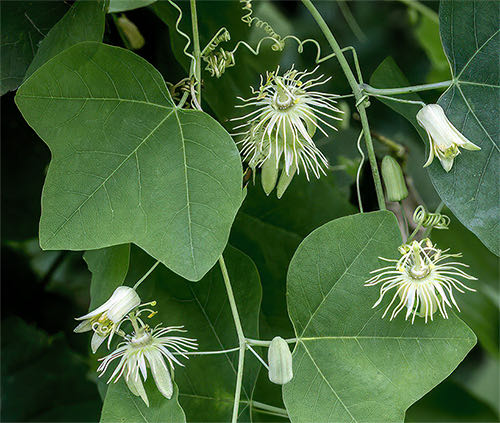

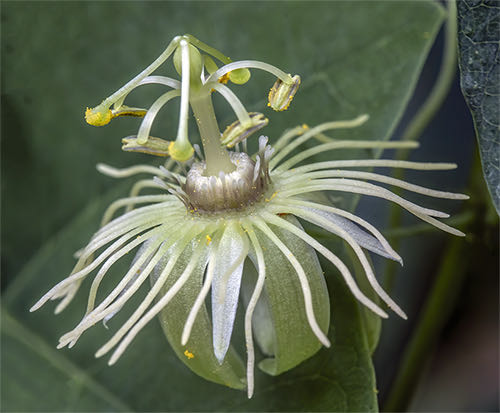
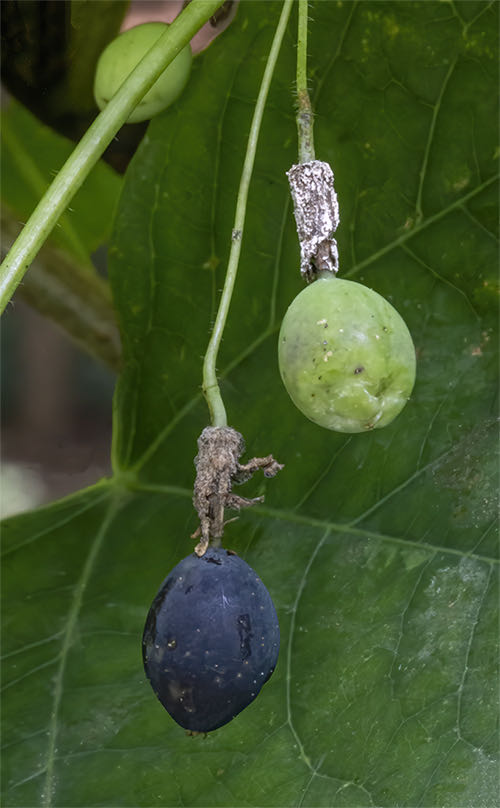
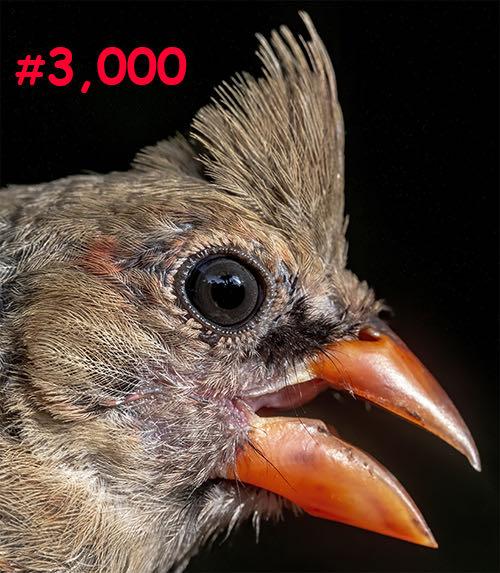
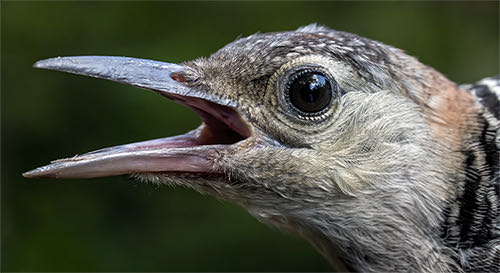
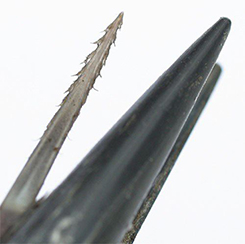 Notice the tip is sharp and the edges are barbed.
Notice the tip is sharp and the edges are barbed. 
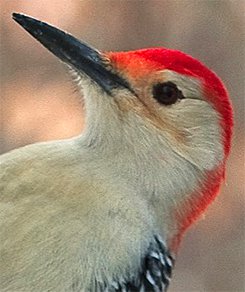 (NOTE: In adult Red-headed Woodpeckers of either gender the ENTIRE head is red.)
(NOTE: In adult Red-headed Woodpeckers of either gender the ENTIRE head is red.)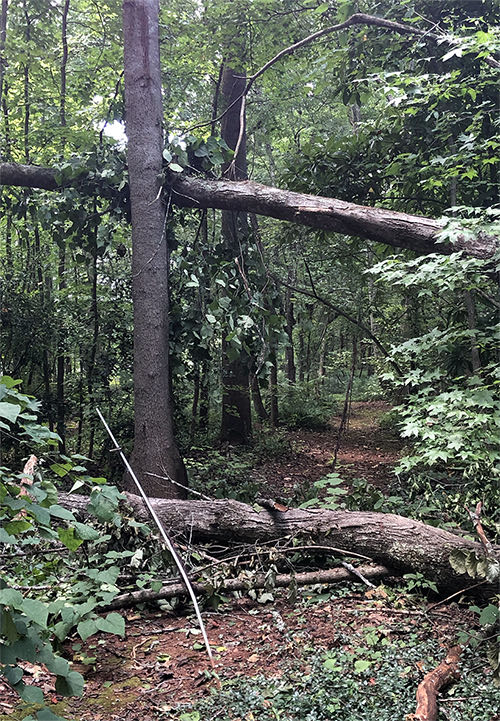










 Please report your
Please report your